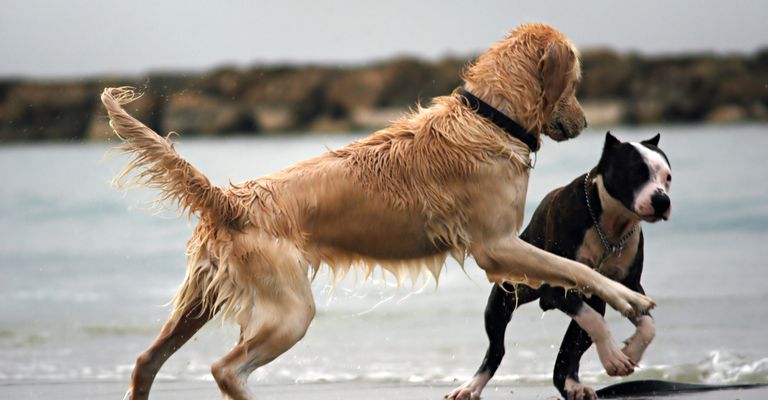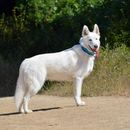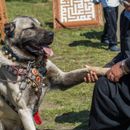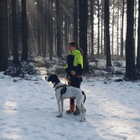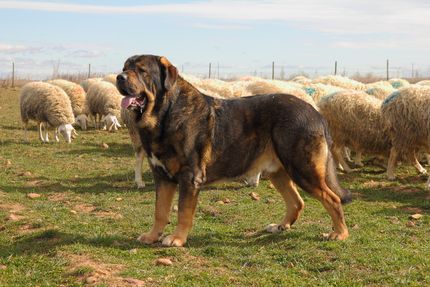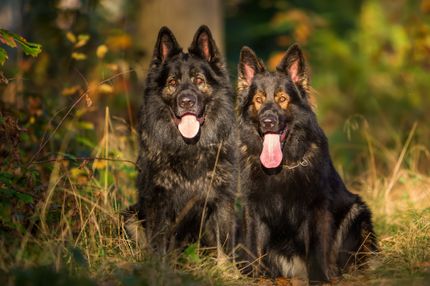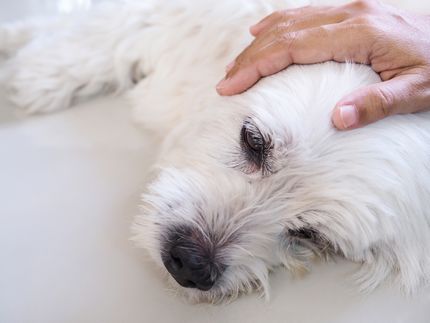How can we understand dogs?
Dogs talk to us all the time - not in words, but with their bodies, facial expressions and voices. If you perceive these subtle signals correctly, you can better understand your dog's needs and emotions and avoid misunderstandings. In this article, we will show you how to understand dog language, correctly interpret your dog's body language and interpret typical vocalizations as part of dog communication. Learn to pay attention to your dog's often small but meaningful signals and make your bond even stronger and more trusting.
Why the big picture matters
When we try to understand dog language, we come across countless individual signals: a wag of the tail, flattened ears, a bark or a turn of the head. But one thing is very important: no signal should be evaluated in isolation.
Dogs always communicate with their whole body, and their signals are created through the interplay of facial expressions, posture, movement and vocalizations. Only in the context of the entire body language and the respective situation can it be meaningfully interpreted what a dog actually wants to express. A dog wagging its tail is not automatically happy - it can be just as excited, anxious or insecure. Similarly, growling does not always mean pure aggression, but can indicate an important warning or uncertainty.
It is therefore important to always observe the dog's overall behavior:
- What is the overall body posture?
- How do the eyes, ears, mouth, tail and movements work together?
- In what environment and in what situation does the behavior occur?
Only by linking all observations - including the current mood, the environment and possible triggers - can you really do your dog justice and correctly classify his signals.
We only see what is visible
As much as we love our dogs and try to understand them: We can't look inside their heads. We can only approach their feelings and thoughts through their external signs. Even experienced dog trainers and behavior consultants always make their assessments on the basis of observations and probabilities - never with absolute certainty.
That's why it's important to always question yourself critically:
- Am I perhaps just interpreting a behavior according to my human feelings?
- Do I see the context, or am I taking a signal out of context?
- Do I have enough patience to look closely before judging?
If you keep an open mind, consciously observe and don't make hasty interpretations, you will develop a finer sense of true dog communication over time - and thus create a deeper, more trusting relationship with your pet.
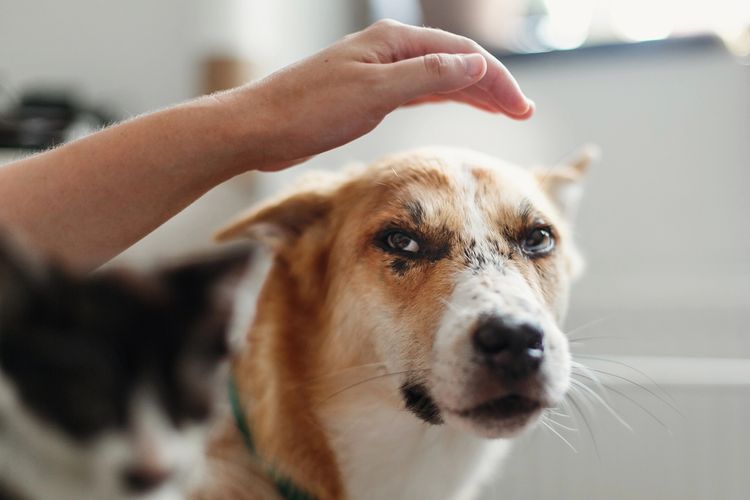
Why body language doesn't look the same for all dogs
Dogs communicate primarily through body language - but not every dog can show the same signals in the same way. Appearance, i.e. hair length, build and anatomical features such as eye shape or ear position, often influences how clearly or subtly certain expressions become visible.
For example, a dog with a long, thick coat can make a piloerection (raised back hair as a sign of tension) difficult to see. A tucked tail is also not immediately recognizable in breeds with a bushy, high-set tail such as the Spitz.
In dogs with short, smooth hair, on the other hand, even subtle muscle tension, skin changes or body movements are easier to observe.
Anatomy also plays a major role:
Dogs with protruding eyes (such as the Pug or Shih Tzu) often appear more "frightened", even if they are not.
Dogs with drooping eyelids (e.g. Bloodhounds) are less likely to blink or show strained eyes.
Severe wrinkling of the face can mask mimic signals such as a tense forehead or contracted eyes.
Similarly, dogs with heavy, drooping ears (such as Cocker Spaniels or Basset Hounds) are much more difficult to read the ear position as a stress or attention indicator than breeds with upright ears.
Important: always look at body language individually
If you want to understand your own dog's body language, you should always take into account its breed-specific and individual physical characteristics. Not all signs are recognizable at first glance - and some signals only appear very subtly or in a modified form in certain dogs.
Patience, close observation and knowledge of these differences will help you to read your dog better and respond more sensitively to his needs.
The most important signals in your dog's body language
Your dog's emotions are not always clearly recognizable at first glance. It is often small changes in posture, facial expressions or behavior that provide information about his current emotional state.
Observe, for example:
The position of the ears: slightly laid back or nervously twitching ears can indicate uncertainty or tension.
The eyes: Wide pupils, increased blinking or a fixed gaze are often signs of stress or excessive demands.
The mouth: Smacking, yawning, lip licking or cheek puffing can be signs of nervousness, appeasement or stress.
The tail: A low, tucked or stiffly wagging tail can express uncertainty or tension, while a loosely wagging tail signals relaxation.
Posture: A slight crouch, shifting of weight backwards or a frozen stance often indicate caution or discomfort.
Breathing: Rapid breathing or sudden panting without any physical exertion on the part of your dog can indicate stress or pain.
By learning to look at these subtle cues in the context of the overall situation, you can better assess what your dog is really feeling - and react in time.
Signs of pain in dogs
Dogs do not always show their pain openly and clearly. While lameness or obvious whimpering are easy to recognize, there are many subtle signs of pain that are often overlooked.
Even before visible lameness, dogs can show minor changes:
Piloerection (hair standing up) over affected areas
Dandruff, coat discoloration or hair loss due to increased licking
Sensitivity to touch, slight trembling (tremor)
Hyperventilation or increased heart rate
Behavioral changes, such as increased aggression, reluctance to go for a walk or reduced willingness to perform
During careful touching or examination, dogs can react to pain by smacking, tonguing, blowing their cheeks, squeezing their muzzle, twitching their ears slightly or holding their breath briefly - often without whimpering or biting. These subtle body signals are just as important as the obvious "loud" signs such as lameness, crying or snapping.
If pain is not recognized and treated over a long period of time, a pain memory can develop. The nerve pathways then change permanently and the dog continues to feel pain even after the original cause has long since healed. Chronic tension, relieving postures and persistent discomfort are possible consequences.
Early recognition of even subtle signs of pain is therefore crucial in order to avoid long-term problems. Especially with active or older dogs, it is worth observing the smallest changes in behavior or physical expression carefully and taking a closer look if in doubt.
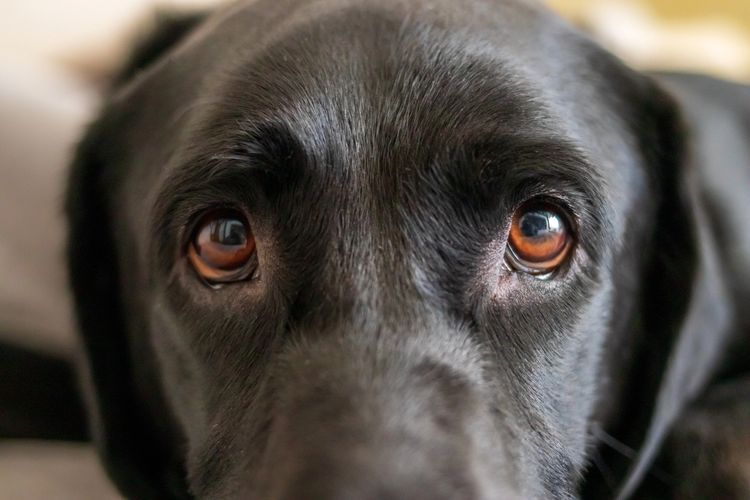
Insecurity and appeasement
In unpleasant or stressful situations, many dogs experience stress or fear. A dog that feels anxious often shows signs of so-called passive submission. These include typical body signals such as a tucked tail, folded ears, a tense forehead, narrowed eyes, folded limbs, lying on its side and whimpering or whining. Such expressions already indicate that the dog is in a critical area of escalation.
Dogs initially try to defuse an unpleasant situation with appeasement signals. These include gestures such as blinking, yawning, licking their own muzzle, averting their eyes or body and pawing. Overjumping and other signs of stress also indicate that the dog is feeling tense inside.
How the dog behaves in the further course of the situation depends heavily on its environment - in particular on how the human or the other person behaves. Whoever is perceived as threatening has a significant influence on the dog's behavior.
A dog that shows appeasement gestures is consciously trying to defuse the situation and avoid conflict. However, if pressure continues to build up or the dog feels increasingly harassed, it is quite natural for him to initiate the next stage of escalation.
It is therefore important to take the subtle signals of appeasement seriously and actively contribute to relaxation as soon as you recognize these signs.
This is what a relaxed dog looks like
A relaxed, calm dog usually shows a free and relaxed body posture. The ears also appear loose - regardless of whether they are standing or hanging - and are in an open, unstrained position.
The gaze is calm and stable, without frantic gazing or fixation. The bridge of the nose also remains smooth, indicating a lack of muscle tension in the face . The lips are closed or barely visible and the teeth are not visible - a clear sign of inner calm. The tail usually hangs down in a relatively relaxed manner, without being firmly raised or pinched. All in all, the dog presents a picture of balance and inner peace.
Conclusion
Conclusion on the topic: Understanding the language of dogs
Taking the time to understand dog language not only strengthens the bond with your four-legged friend, but also creates trust, security and clarity in everyday life. It is not about individual gestures, but about the big picture: the dog's body language, its vocalizations and the respective situation must always be considered in context.
Whether it's direction of gaze, body posture or small signals such as yawning or licking - dogs give many indications of their condition that we should recognize and take seriously. If you learn to interpret your dog's signals, you can avoid misunderstandings, recognize stress at an early stage and help your dog to feel more comfortable.
Because real dog communication means observing carefully, reflecting on yourself and respecting the needs of the animal - for the goal of a harmonious relationship between humans and dogs.
Sources and relevant links
Schwarz S (2018). Hrsg. Physiotherapie für Hunde. 1. Auflage. Schattauer GmbH.
Thiesen-Moussa D (2021). Der gefährliche Hund – was ist das eigentlich? team.konkret.
Agnes Habenicht (2024). Hunde in der Sprachtherapie einsetzen - Ein Praxisbuch. Ernst Reinhardt Verlag.
